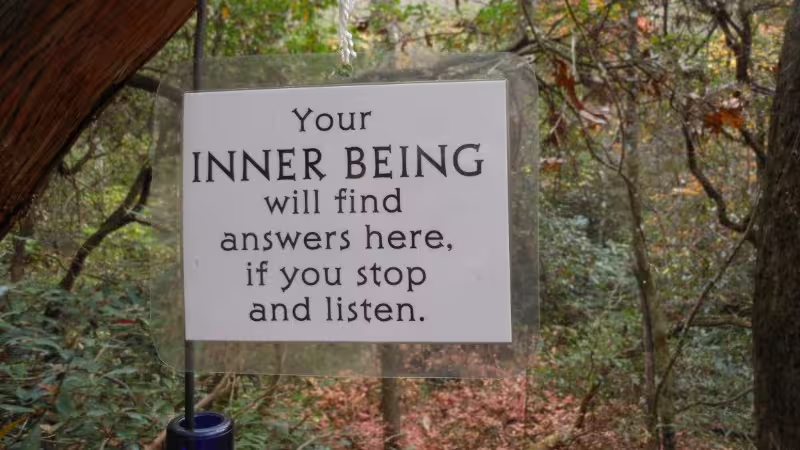Last week we discussed Supernatural Aid. This week we’ll talk about Nature as Supernatural Aid. While there are many forms of Supernatural Aid an ecospiritual seeker could rely on, nature is one of the more convenient ones, since most of us have the opportunity to experience nature in some form.
I grew up on a 400-acre farm in the 1960s and 1970s. Back then there were no video games, and the television only had three channels, and that was if the wind was blowing in the right direction. My best friend lived five miles away, and if we wanted to visit each other we had to ride our bikes or walk. Our afterschool entertainment consisted of building forts in the woods, taking hikes, fishing, or collecting plants and animals. Growing up this way not only allowed me an opportunity for fresh air, it also stimulated my imagination and curiosity. The mythology of my time consisted of stories from my Scots-Irish great-grandmother about Native Americans, faeries, and Celtic lore, and Christian tales from my Scottish grandmother about the biblical patriarchs.
I was never much interested in Christian mythology, as it mostly seemed to consist of people getting zapped by God for doing things in a way that displeased him. And he seemed to be displeased quite a bit. The Native American and Celtic lore were much more alive to me. Those stories were not black-and-white moral tales, but puzzlers where the right answer was often difficult to find. The more I studied these stories, the more I gained insight into myself and the world around me.
As I became much more acquainted with mythology and learned to interpret it not as literal stories, but as teaching metaphors, fables, and parables, I returned to some of those Bible stories and got a lot more out of them the second time around. If you look at those stories as teaching tools and not as literal textbook descriptions of actual places and people, they become useful again. They come alive again. The secret is to focus on the message and not on the messenger.
Nature as Supernatural Aid: The Power of Myth
This poetical use of story and myth can also extend to nature. It is possible to use the wilderness as a metaphor for spiritual growth. In fact, many religious mythologies do just that. When Jesus asks us to, “Consider the lilies of the field’ which don’t toil or spin, yet they’re complete,” or when Buddha tells us that, “The Way lies in the nature that surrounds us,” these spiritual teachers are using nature as a training manual.
A lot of the great enlightened teachers began their spiritual journeys by going off into the woods. Buddha did it, Jesus did it, Mohammed did it, Moses did it, the Native Americans did it, and so did most of the great spiritual masters throughout history. There is something about seeing the wild places firsthand that awakens our deeper, more intimate, and more personal levels of awareness. It is a rite of passage that uses nature to give meaning to our lives while returning to our most primal instincts.
Science in recent years has begun studying the psychological aspects of wilderness experiences. In a 2005 study, van den Berg & Heijne researched some of these characteristics. The study, Fear versus Fascination: An Exploration of Emotional Responses to Natural Threats, explains that there are two basic types of attention: focus and fascination.
Focus is the type of attention we experience most often in artificial environments. Human hands make most, if not all, of the things we see indoors. Since we evolved in the wilderness, but have only been living in increasingly artificial environments for a few thousand years, our brains are wired to be on guard in unfamiliar surroundings. The more primitive parts of our brains recognize artificial places as somehow alien. Because of this, we tend to use more energy to focus our attention while indoors to avoid these man-made distractions.
Fascination is the type of attention we experience more outdoors. The deeper, older parts of our brains recognize natural environments as something familiar, so we tend to use fewer mental resources for focusing attention. This means that more mental energy is available to generate more meditative states. So unless a bear is chasing you, you’re calmer and more relaxed in the woods or on a beach than in an office or classroom. Such serenity is a prerequisite to spiritual events, so experiences in nature are highly conducive to developing more spiritual awareness.
Such ecospiritual awareness, enhanced and induced by nature, is not about a particular religion. All religions contain aspects of nature, and all religions, when understood properly, hold a deep reverence for the natural environment. Ecospirituality is about fostering a spiritual connection by using nature as a tool to experience those awe-inspiring moments that make life worthwhile. When nature is experienced in this way, it is Nature as Supernatural Aid to the seeker. Sitting or hiking quietly in the woods or in another natural environment will allow your own inner wisdom to come forth. This Supernatural Aid will help you to find your own fires of inspiration when you walk the ecospiritual path.

